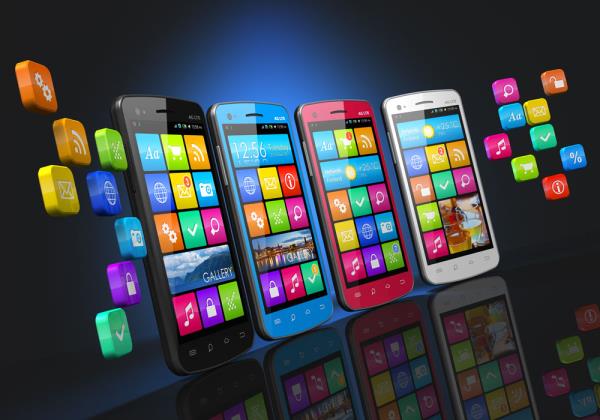08 February 2024

Yisrael Nov, EVP sales, Parallel Wireless
Mobile networks have come on in leaps and bounds in recent years with the shift from 3G, to 4G, and now, in some regions, 5G. Leapfrogging earlier technologies has meant that Africa’s operators have benefited from the trial and error experiments performed in other world regions, giving them a major step up…
For many years, worldwide adoption of innovative technology followed a predictable path.
It started with early-adopter countries, who have the infrastructure and consumer culture for evaluating, testing, and phasing in ‘the new’ while relying on the old. Next in line were the developed, wealthy markets that had the technical skills and the financial muscle to bear the risks of new technology as well as the competitive environment that drove them to do so. And finally came the emerging markets, underdeveloped nations who could simply follow the adoption models that were established in other countries, allowing them to enjoy proven solutions and practices at economy-of-scale prices.
This logical progression, a trickle-down approach to technology, made sense when the duration of a typical adoption cycle was measured in decades. While this was a good way to ensure worldwide adoption, it cemented the position of emerging markets as perpetual followers and put them at a permanent technological disadvantage by forcing them to always play ‘catch up.’
Leapfrogging
Underdeveloped nations are characterized by having unique cultural, environmental, political, and commercial landscapes. Due to the generally low ARPU, in comparison with other markets, telecom operators in those regions have limited resources to invest in infrastructure, whether for maintenance or for upgrades.
The geography and terrain that characterize the rural areas in those regions can result in the absence of crucial physical infrastructure. The lack of access roads, for example, makes onsite installations trickier, while a weaker utility infrastructure results in an inconsistent, yet relatively expensive, power supply. This is one of the factors that can delay technological development, unless an innovative approach is taken to ensure smooth, continuous operation. Even in denser areas where the demand might be higher and the users more advanced, the power grid can be spotty and unreliable.
When mobile communications appeared, they completely disrupted the ‘catch up’ model, as underdeveloped countries realized that they had an opportunity to ‘leapfrog’ straight to mobile to provide digital services sooner and thus narrow the technological gap that favours developed nations. ‘Leapfrogging’ is the term applied when traditional stages of development are skipped over in favor of a quicker shift to newer technologies or new opportunities for economic growth. In this case, instead of rolling out landlines for telecommunication and broadband internet, which would have taken decades at huge cost, it became easier, faster, and more reliable to prioritize the installation of cell sites and mobile devices. In the context of the digital revolution, leapfrogging has allowed societies and nations to rapidly incorporate digital, knowledge-based services and high value-add production into their economy.
Pursuing their own path
Parallel Wireless’ presence in underdeveloped regions started with helping to connect the unconnected by delivering the most cost-effective, efficient solution for rural coverage (defined as areas in which one site provided coverage for up to 1,000 inhabitants). For example, in the last few years we have established a footprint in Africa with a solution that meets the special requirements of rural regions such as support for transmission over satellite and equipment powered by standalone power sources (e.g. solar). Later, this footprint was expanded, with solutions that include 2G, 4G and now 5G, reflecting the diversity of the network.
Operators in these regions have fewer in-house resources available for developing and upgrading the network, so 5G adoption is still sparse and even 4G is limited to densely populated areas. On the other hand, there is a growing realization that connectivity and broadband are not a luxury, but a necessity for the population to enjoy the fruits of a global economy. The cost of satellite communication (multi-beam and LEO satellites) is decreasing, and it is therefore more accessible, improving the business case for connecting additional sites to a satellite backhaul. We have also noticed more interest in the power of AI to impact the industry by making networks smarter, more reactive, and more efficient.
Operators in underdeveloped nations need to be able to innovate faster to capitalize on the latest improvements in cost-reduction and efficiency. They may need to leapfrog again and learn from the trials and tribulations that carriers in more advanced countries have gone through, instead of repeating them. The fact that their networks are still relatively small and new already puts them in a better position to embrace smarter network components faster.
“When mobile communications appeared, they completely disrupted the ‘catch up’ model, as underdeveloped countries realized that they had an opportunity to ‘leapfrog’ straight to mobile to provide digital services sooner and thus narrow the technological gap that favours developed nations.”
Where will they leap to?
While the drivers of innovation may be different than in mature markets, innovation is still crucial for carriers in underdeveloped nations as they must find new ways to offer advanced digital services to low-income customers. This has led to interest in ORAN, as more and more MNOs realize that the best way for them to speed up innovation and optimize their investments is to break their reliance on proprietary hardware and gain the flexibility to innovate the way they need to. The ORAN ecosystem has grown and is now fully capable of providing MNOs with a range of opportunities to upgrade their networks without being locked-in to the roadmap and feature velocity of a single vendor.

Another direction that carriers in underdeveloped nations need to leap towards is power savings. Given the price-sensitivity of their markets and their power-hungry networks spread over large distances, carriers need such solutions sooner rather than later. Rising energy costs severely threaten the viability of advanced services in their market. Parallel Wireless, whose strength is mobile network energy conservation, has started to see new opportunities due to the rises in energy unit costs and cell-site power consumption. From a network management standpoint, our All-G solution is attractive for many companies who seek efficient, high-performance solutions that can manage a complex, heterogeneous network from a single system.
The focus of MNOs in these regions is to aspire to self-managing networks, with automation and zero-touch solutions that minimize the need for manual intervention. By deploying solutions that provide enhanced logging and tracing capabilities, they can improve the deployment and network maintenance efficiency.
The challenges of operators in emerging, underdeveloped markets include maintaining the flexibility to react in a very dynamic market. As the market expands and matures, competitive pressures from new entrants, evolving regulatory policies and fluctuations in demand for capacity all require operators to maintain network agility. This means that carriers cannot afford to ‘blindly’ deploy new cell sites, they need a smarter, more centralized approach towards network resource management.
Eliminating gaps, creating opportunities
As mobile communications have become an essential component of the global economy, countries that traditionally have been slow to adopt new technology have realized that they have an opportunity to significantly close the gap between them and more developed countries with fully-digital economies. The economical upside of taking a bold approach to the adoption of technology, of leapfrogging over earlier generations of mobile communications to newer paradigms, will be very significant for governments, citizens and the mobile network operators who serve them.






